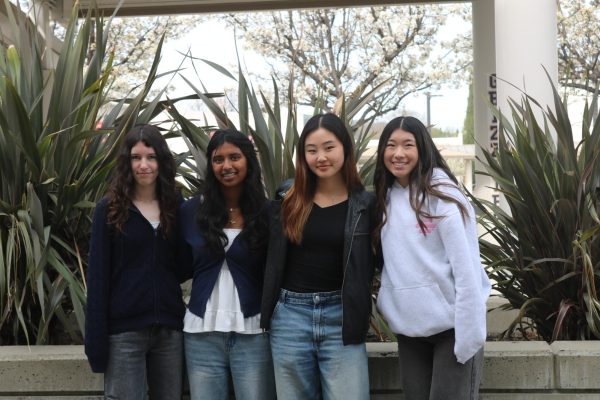EDITORIAL: More housing in San Ramon a necessary evil
Unsigned staff editorials reflect the opinion of the majority of the editorial board.
If you’ve heard discussions about turning golf courses into homes, or seen concerned citizens handing out flyers at Trader Joe’s to oppose the proposed construction of apartments where Nob Hill now stands, then you probably know that the conversation about housing and development in San Ramon is a common one.
Regardless of whether San Ramon wants to build more homes, the state requires the city to. And if we have to build more, we should aim for dense, semi-urban development, as opposed to sprawling suburbia.
Who tells us how much we have to build, and how? The California Department of Housing and Community Development determines the amount of homes each area of the state, including the Bay Area, needs to build. In turn, the Association of Bay Area Governments, composed of officials from the Bay Area’s cities and counties, allocates the amount of housing that needs to be built in each city and town in the Bay Area. This allocation process happens every eight years.
For the 2023-2031 period, San Ramon is expected to build 5,111 new units. This is a significant increase from the past eight years, when San Ramon was assigned to build only 1,417 units.
We support the ramp-up in construction, and especially the increase in affordable housing. For the next 8-year-cycle, 2,359 units (about 46 percent of the total allocation) are required to be affordable for people making less than 80 percent of the median income in Contra Costa County. For a single person, this is $69,000, and the dollar amount increases as the number of people living in one unit increases. We applaud the city for providing more affordable housing for lower-income San Ramonians.
We also applaud the City Council for ensuring that affordable units cost no more than 30 percent of a person’s income through the Inclusionary Housing and Commercial Linkage Fee Ordinance. This is especially important because people who spend more than 30 percent of their income on housing are considered “cost burdened”, meaning they “may have difficulty affording necessities such as food, clothing, transportation, and medical care”, according to the Department of Housing and Urban Development (HUD).
California truly does need to build more to reach an adequate housing supply. As of several years ago, California has fewer housing units per capita than every single other state, except for Utah.
Construction is the most important piece of the puzzle, but there are other steps the city government can take in the meantime.
As of 2019, 4.7 percent of apartment units in San Ramon and Dublin were vacant, according to a HUD report. The vacancy rate could be decreased, thus increasing the supply of housing and decreasing prices, by implementing a vacant unit tax. Such a tax could take various forms, but at its core it creates incentives for landlords to fill vacant units promptly. One model could be Vancouver, which taxes units for 1.25 percent of their value if they are occupied for less than half of the year.
An added benefit of a vacant unit tax is that a decrease in vacant units may lead to a reduced need for housing construction in future housing cycles, preserving more natural space.
Introducing a vacant unit tax can help improve the stress on housing, but the most important step is to build more.
How can San Ramon build more in a sustainable manner? The answer is density.
Dense, multi-story construction in San Ramon’s downtown will allow occupants to frequent local businesses by walking or biking, conserving energy compared to the construction of more single-family units. The CityWalk project, which is projected to add 4,500 units over the next 27 years in the area near the City Center, will help create a space where residents can live, work, study, and play in close proximity.
We are, however, concerned that only 15 percent of the CityWalk housing units are allocated as affordable. Increasing the percentage of affordable housing in the CityWalk project will do much to help the city meet its affordable housing goal over the next several cycles.
In addition to prioritizing construction downtown, San Ramon can also change its zoning to allow more multi-family units in plots currently allocated for single-family housing. This would allow new development to take place on already-developed land, preserving open space, while also providing a greater variety of choice in housing options. And, those who still want to live in single-family units can still do so.
The city government should also incentivize developers to build more modular units. Modular units are pre-built and then transported to their final destination. Not only does the use of modular units quicken the construction of homes, but it will also drastically reduce costs.
For example, in San José, an emergency homeless housing site using modular units, which started to be built last year, is expected to cost $85,000 per unit. This is spare change compared to the $750,000 per unit that San José Mayor Sam Liccardo estimated would be the cost of the housing if it was not using modular units.
We understand and sympathize with concerns that development may change the character of the city. But a city’s culture and character are not determined by their density. The city government should be more proactive in ensuring that proposed development looks attractive – no more aluminum boxes.
Although the city needs more homes, we oppose the proposed Marketplace development, which would destroy jobs and eliminate an important public meeting place used by adults and teens alike.
Dense construction, as well as the implementation of a vacancy tax, will preserve more open space in San Ramon, while allowing more people, including those with low incomes, to reap the benefits of living here.




